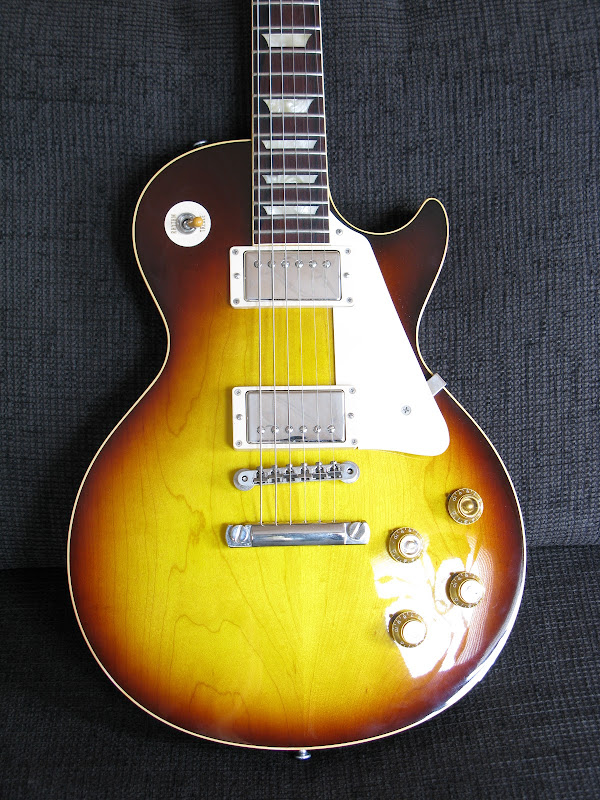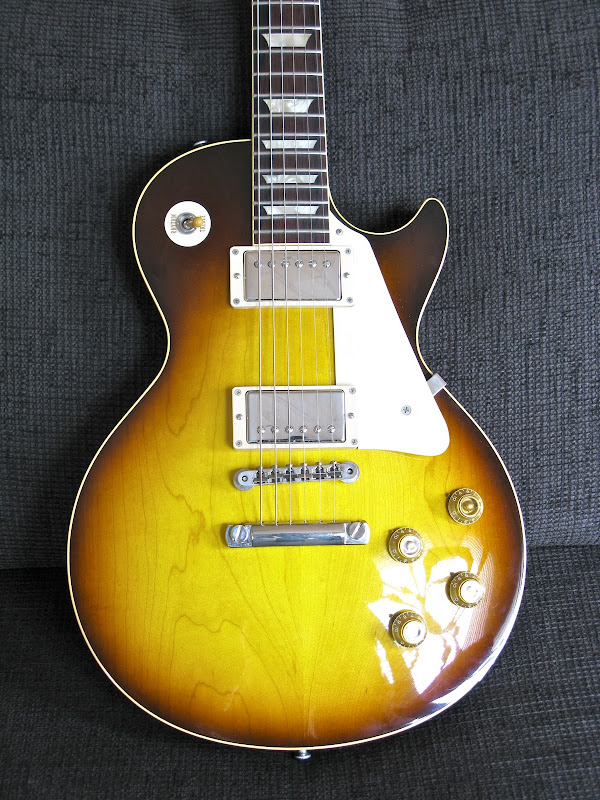Justin Connolly said:
Diamond, sorry for the harsh overtones earlier. Yes, the pics I posted are my guitar (as on P.1) but for convenience here are two more shots (below):
You can see the left side and especially a blob or lump on the top right side which really stands out under the light.
As I said before, not an issue; just wondering why it wasn't more even or tapered out for a more smooth finish and the earlier question was how much of the finish is actually poly and/or nitro overall.
Regards
J
There are 2 major differences in the application of nitro and poly.
In a nutshell, poly will be mixed with a catylist which acts as a hardener and the chemical rection between the chemicals will cause the finish to cure and harden. Once the finish has cured, it is very hard. The hardness will depend on the chemical composition of the product. Some can be thick and hard, like a hard plastic coating, others can be thinner.
When applying a poly product, the painter is looking for an "off the gun" finish that is flat, even and glossy. "Orange peel" from a poorly applied poly is extremely difficult to rectify. The finish can be carefully sanded and buffed, however the hardness of the finish makes it almost impossible to correct without some sort of artifact being left behind. Hazy finishes, swirl marks and left over "orange peel" is common.
It is, generally speaking, a "one shot" product.
Nitro is applied, allowed to dry naturally or in some cases artificially accelerated to a level of cure that allows the product to be handled. An "off the gun" gloss is always a good foundation to a good finish with this type of finish. However, to achieve a full gloss finish, there is the need to physically buff and polish the finish. Then the full lustre is realised. An experienced hand will know how much finish needs to be "cut" to achieve this.
Like every Tokai I have seen.
Rather than relying on the religious diety to which you refer (they have been scarce for the last couple of thousand years) to advise you how much nitro/poly/ you have on your guitar, there is a simple method to unlock the secret.
The acetone test. It can prove once and for all what is on top of the wood.
We call them hardware stores, in the UK it is the DIY, yes? They should sell it. Failing that, you can use nail polish remover. The clear stuff.
Take a pickup out, and test in the cavity because you don't want to test it somewher that can be seen. The acetone will act like a thinner and soften the finish. As Diamond mentioned, there is no way that the nitro on a current UK production LS150 has cured yet. It takes years and will eventually shrink back into the grain as the chemicals continue to evaporate. Years and years and years.
Anyway, use something like a cotton bud and dip it in acetone and start rubbing on a small area. Be patient, and keep dipping and rubbing. Open a window because the smell is dreadful and if women knew how nasty the stuff was, ..............
Keep dipping and rubbing.
Then, when you are either through to some bare wood, which would indicate a 100% nitro finish or can no longer remove any finish (if you could at all, which would indicate 100% poly), take some decent photos of it and post them up in this thread. Your description of how the procedure transpired, along with some photographic documentation will assist in establishing, for a fact, rather than propagating the ill advised guesses and opinions that I so often see plastered around internet forums.
It either is or isn't and unless you can confirm which it is, anybody elses' unsubstantiated opinion or guess is best kept to themselves.
So, to further the knowledge of Tokai guitar finishes and assist others with this often asked and, to my knowledge never answered question, myself and, I am sure, others would be keenly interested in your findings.
Or, do we settle for the established misinformation to continue to be taken as fact.





